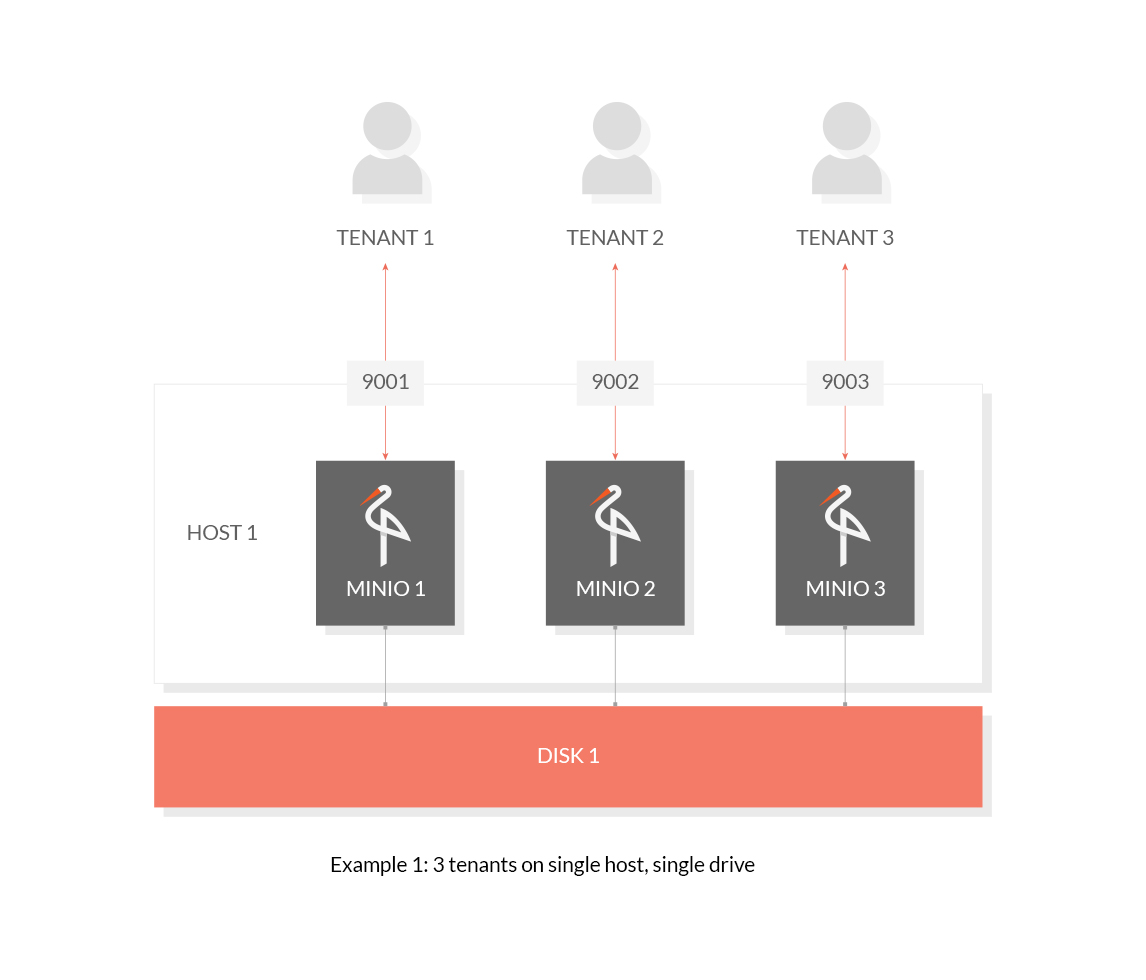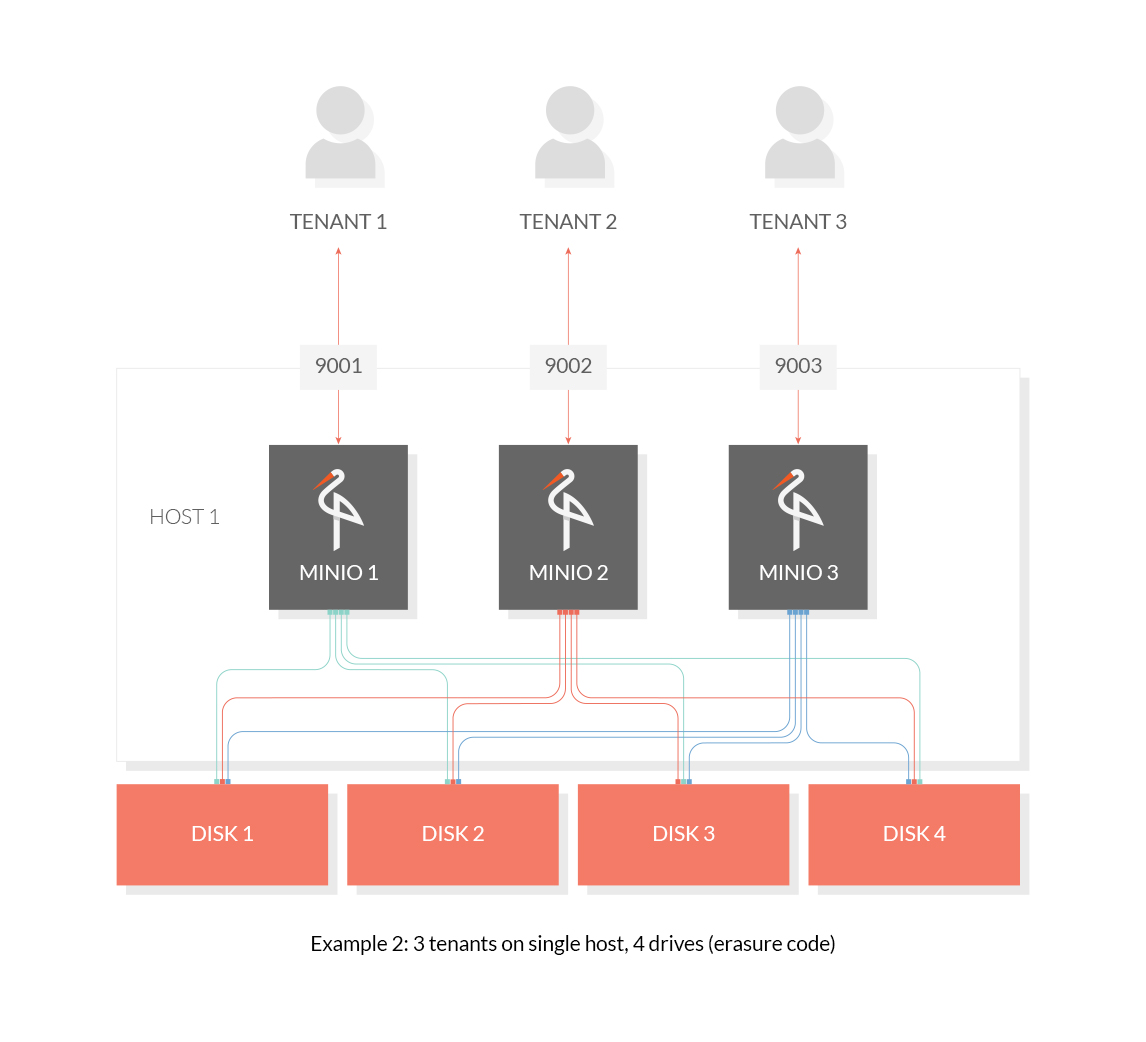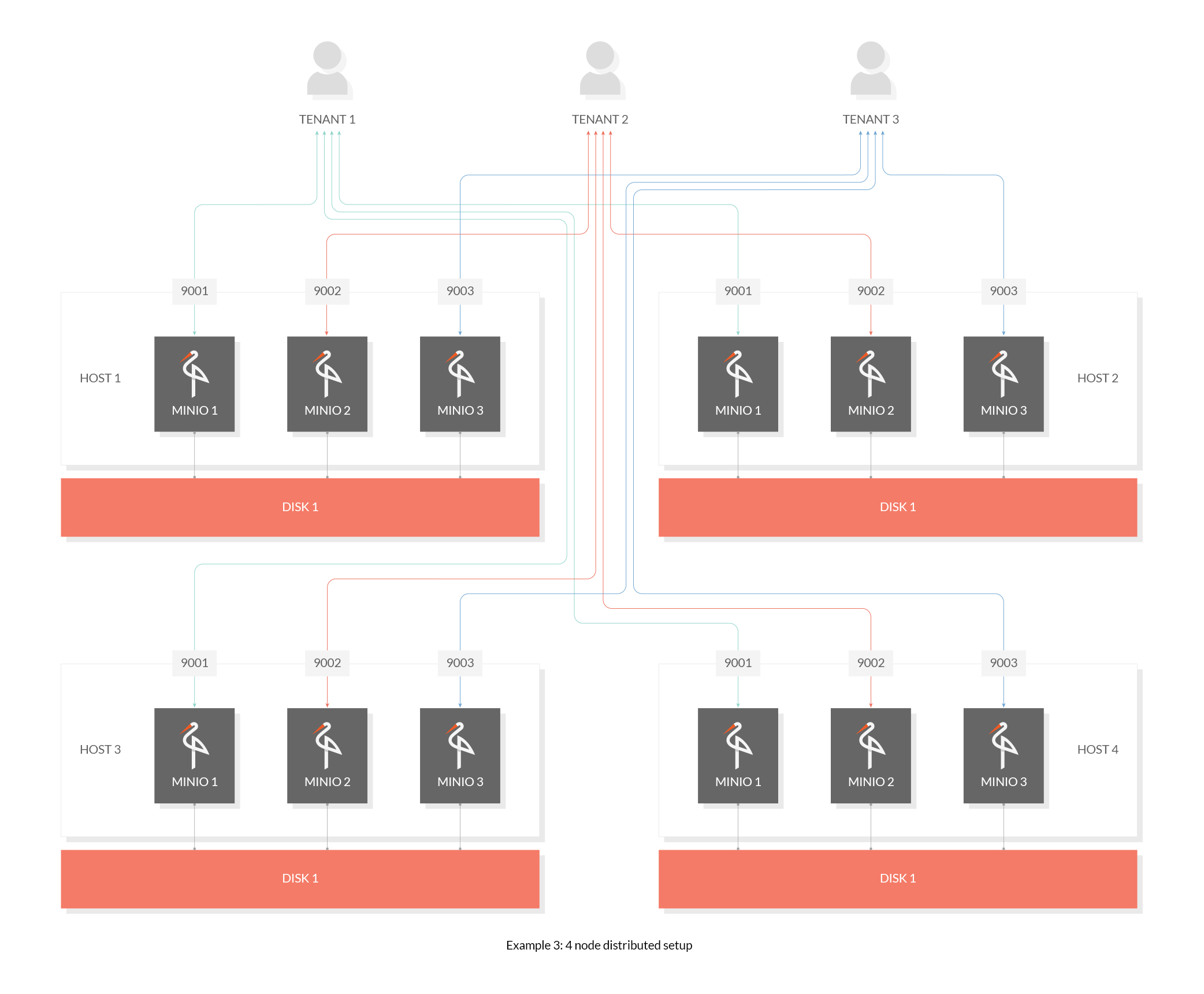# MinIO Multi-Tenant Deployment Guide [](https://slack.min.io) [](https://goreportcard.com/report/minio/minio) [](https://hub.docker.com/r/minio/minio/)
This topic provides commands to set up different configurations of hosts, nodes, and drives. The examples provided here can be used as a starting point for other configurations.
1. [Standalone Deployment](#standalone-deployment)
2. [Distributed Deployment](#distributed-deployment)
3. [Cloud Scale Deployment](#cloud-scale-deployment)
## 1. Standalone Deployment
To host multiple tenants on a single machine, run one MinIO Server per tenant with a dedicated HTTPS port, configuration, and data directory.
### 1.1 Host Multiple Tenants on a Single Drive
Use the following commands to host 3 tenants on a single drive:
```sh
minio server --address :9001 /data/tenant1
minio server --address :9002 /data/tenant2
minio server --address :9003 /data/tenant3
```

### 1.2 Host Multiple Tenants on Multiple Drives (Erasure Code)
Use the following commands to host 3 tenants on multiple drives:
```sh
minio server --address :9001 /disk1/data/tenant1 /disk2/data/tenant1 /disk3/data/tenant1 /disk4/data/tenant1
minio server --address :9002 /disk1/data/tenant2 /disk2/data/tenant2 /disk3/data/tenant2 /disk4/data/tenant2
minio server --address :9003 /disk1/data/tenant3 /disk2/data/tenant3 /disk3/data/tenant3 /disk4/data/tenant3
```

## 2. Distributed Deployment
To host multiple tenants in a distributed environment, run several distributed MinIO Server instances concurrently.
### 2.1 Host Multiple Tenants on Multiple Drives (Erasure Code)
Use the following commands to host 3 tenants on a 4-node distributed configuration:
```sh
export MINIO_ACCESS_KEY=
export MINIO_SECRET_KEY=
minio server --address :9001 http://192.168.10.11/data/tenant1 http://192.168.10.12/data/tenant1 http://192.168.10.13/data/tenant1 http://192.168.10.14/data/tenant1
export MINIO_ACCESS_KEY=
export MINIO_SECRET_KEY=
minio server --address :9002 http://192.168.10.11/data/tenant2 http://192.168.10.12/data/tenant2 http://192.168.10.13/data/tenant2 http://192.168.10.14/data/tenant2
export MINIO_ACCESS_KEY=
export MINIO_SECRET_KEY=
minio server --address :9003 http://192.168.10.11/data/tenant3 http://192.168.10.12/data/tenant3 http://192.168.10.13/data/tenant3 http://192.168.10.14/data/tenant3
```
**Note:** Execute the commands on all 4 nodes.

**Note**: On distributed systems, credentials must be defined and exported using the `MINIO_ACCESS_KEY` and `MINIO_SECRET_KEY` environment variables. If a domain is required, it must be specified by defining and exporting the `MINIO_DOMAIN` environment variable.
## Cloud Scale Deployment
A container orchestration platform (e.g. Kubernetes, DC/OS, or Docker Swarm) is recommended for large-scale, multi-tenant MinIO deployments. See the [MinIO Deployment Quickstart Guide](https://docs.min.io/docs/minio-deployment-quickstart-guide) to get started with MinIO on orchestration platforms.